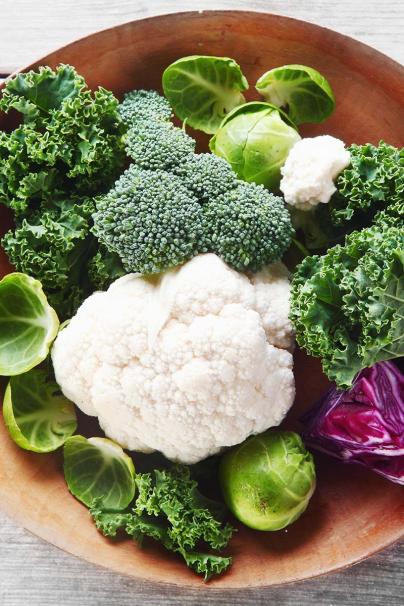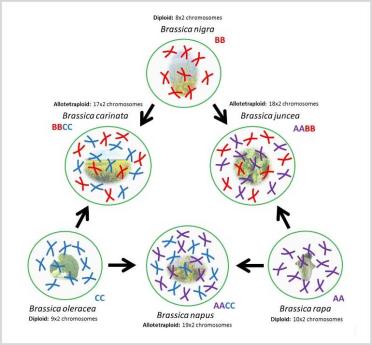The many and varied uses for Brassica plants are as interesting and diverse as their shared genetic history. Despite their widely differing appearances, broccoli, cabbages, sprouts, cauliflowers, kale, savoy, kohlrabi and kai-lan are all cultivars of just one species – Brassica oleracea.
Then there are the black and brown mustards, rapeseeds and turnips. All of these various Brassica species have an intertwined family history, with key species sharing certain genetic traits that have produced other, important plants.
Three of the Brassica species, B. nigra, B. oleracea and B. rapa, are diploid organisms, i.e. they possess 2 pairs of chromosomes, much like in humans. However, due to their genetic similarities, these species have managed to interbreed.
This has given rise to the “triangle of U” – whereby a conjugation of B. nigra (black mustard) and B. oleracea formed B. carinata (Ethiopian mustard); B. oleracea and B. rapa (turnips, chinese cabbage) turned up B. napus (swedes, oilseed rape), while crossbreeding between B. rapa and B. nigra has lent us B. juncea (brown mustard).
These interbreeding events have given rise to more complex genomes – so that B. napus, B. carinata and B. juncea are now tetraploid; they have two sets of two pairs of chromosomes from each of their precursors (see Triangle of U, below). It’s no surprise that we, therefore, see so much diversity within this interesting and incredibly useful genus of crops.











